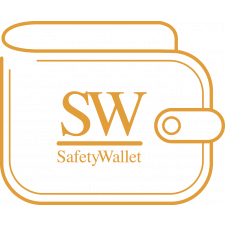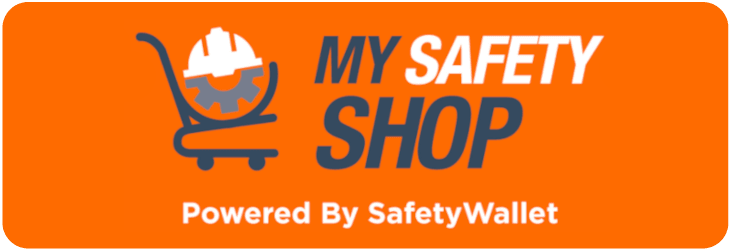Managing Health and Safety in Schools and Colleges
Why is Health and Safety in Schools important?
Health and safety in schools and colleges is an imperative factor. Ensuring pupil and student safety has been an imperative part of an ethical framework for decades. As with other public services, schools, as well as colleges, are obliged to adapt to periods where considerable changes are occurring.
They are also forced to continuously meet existing as well as new challenges. These challenges faced are often associated with new structures, accountabilities, additional concerns from parents, the public, and political circles in addition to concerns with excessive risk aversion.
If you have any questions, please feel free to speak to one of our Experts
Health and Safety Ethics in Schools
It is crucial that there is a systematic approach towards the management of safety and health risks. It is the right thing to do where ethics is concerned. A portion of the overall values of a school is to ensure that staff and visitors are kept safe and to assist pupils and students in becoming aware of risks instead of developing an aversion to risk in the future.
In an operational sense, it helps to avoid accidents which may be costly along with disruption losses and damage to the morale and reputation of the school. In addition, it also enables the school to comply with the duties bestowed upon them under health and safety laws and regulations.
Legal Responsibilities
The Occupational Health and Safety Act 85 of 1993 imposes a duty on all employers to ensure, as far as reasonably practicable, the health as well as safety of employees and others, such as visitors to the school / college, such as pupils and students, is ensured.
The Occupational Health and Safety Act also further indicates the legal responsibilities that the employer, the college, or school in this regard, must meet the overall duty of care. This includes the correct policy organization as well as arrangements, which must be in place.
A suitable and adequate risk assessments must be undertaken and that competent advice and adequate training for staff is accessible, in line with the health and safety policy in schools. Along with this, there are also further regulations that demand compliance from broader classes of hazards.
These include equipment, chemicals, electricity, and noise. In taking the necessary steps to adhere to the Occupational Health and Safety Act, the school or college can defend itself adequately against a claim for damages should an accident occur on the premises.
Pupils and students may not be considered employees, but the Occupational Health and Safety Act still applies to their welfare. Each school has unique and similar elements of low and high risks where health and safety are concerned.
Apart from precautions that are obvious, there are also other considerations such as fire escape routes and regular drills, which feature a great number of hazards that are often overlooked.
These include science laboratories, play areas, sports fields, and numerous others. These hazards pose a threat to pupils and students, parents, teachers, and others who enter the premises.
It is for this reason that the employer, the school, or college, must be fully compliant with the Occupational Health and Safety Act.
Download the FREE Health and Safety in Schools Checklist.
Risk Assessments
As employers have a legal obligation to carry out risk assessments that are suitable and adequate in accordance with the Occupational Health and Safety Act, so do schools and colleges.
When conducting a risk assessment on the health and safety in schools and colleges, it must detail any risks associated with the facility as well as activity. In addition, the precautions to be taken to minimize the stated risk must also be indicated in detail.
School Effectiveness
The ethical element in ensuring health and safety in schools and colleges is that it is the right thing to do, and it does not just surround legal compliance. It is also about achieving and providing, excellence in the manner that health and safety risks are managed.
It has substantial benefits for any educational institution and can assist in the aversion of:
- Serious injuries which could have otherwise been prevented.
- Work-related illnesses such as stress and back pain.
- Workdays lost due to illnesses and injuries which are workplace-related, and
- Costs involved with damage-only accidents along with the disruptions that result from such.
Accidental Injury Rates in Schools
When considering accidental injury rates in schools, specifically, the rates are low in young people. Most young people tend to be more at risk from the age of ten up to 24.
Up until the age of ten, young people are most likely to be injured at homes. However, young people between ten to fourteen years of age are likely to be injured either in sports, in public, or while in transit to and from school.
The most substantial type of injury which befalls young people up to the age of fourteen falls, followed by transport, foreign body entering through an orifice or skin, accidental poisoning burns scalds, or venomous bites, drowning, and others.
From these statistics, the most significant number of falls, for those under 14 years, tend to occur at school on the playground. There are also certain sports activities, such as rugby and soccer, that stand out amongst others where injuries are likely to occur in schools.
Safety Risk Management in Schools
The importance of teaching health and safety in schools and colleges
Health and Safety Risk Management in Schools and colleges should form a part of any educational institution’s continuous planned process and an integral part of the management of a school or college.
There must be clear policies as well as an understanding of the main stakeholders involved with health and safety, and clear plans along with effective monitoring mechanisms. It is also imperative that information is used to both review and learn so that there can be a continuous improvement on future arrangements.
SafetyWallet’s support and resources for schools and colleges
Both schools and colleges play an imperative role in preparing children and young people in identifying, recognizing, and managing risk. For this reason, SafetyWallet provides both support and assistance to schools and colleges.
By subscribing to SafetyWallet, schools and colleges have access to a variety of training materials as well as professionals who can conduct inspections, risk assessments, and audits in assessing the effectiveness of the safety management system and programme which is in place.
Click on the image below to find a SafetyWallet Solution that suits your School / College (Branch/Site specific) and get the 21 benefits along with the subscription:
There are also recommendations offered for improvement on legal compliance with the Occupational Health and Safety Act to ensure that schools can balance the provision of education with prioritising staff, student, and visitor health and safety above all.
SafetyWallet, in addition to its services and solutions, provides Health and Safety e-Learning training which is to the benefit of the school as the employer along with staff and students as the employees, this includes:
- A detailed evaluation of the code of conduct for both teachers and employees as each school and college is obliged to have this.
- Knowledge of the parking areas and whether staff has allocated parking, including prohibited zones for parking.
- Understanding the rights that students and pupils have along with their responsibilities towards health and safety.
- In-depth knowledge of the school and college’s access points along with all buildings, including gates, doors, keys, codes, alarms, evacuation routes, and others.
- The guidelines and procedures associated with visitor reception to the premises.
- Thorough understanding of emergency procedures.
- A clear understanding of the basic requirements associated with Occupational Health and Safety.
- Knowledge and understanding of the compensation laws associated with injuries and diseases, and
- A clear understanding of internal Occupational Health and Safety rules and regulations.
SafetyWallet has closely monitored the developments associated with educational facilities within South Africa. In ensuring continuous health and safety in schools and colleges, these facilities cannot afford to take shortcuts or ignore possible risks.
By subscribing to SafetyWallet, numerous schools and colleges can receive the assistance that they need to identify and mitigate risks at various facilities. Through this, schools and colleges can ensure that learners are provided with a healthy and safe facility.
SafetyWallet, in partnership with MAKROSAFE and OHS Online, ensures that subscribers can obtain the highest level of compliance with the Occupational Health and Safety Act, all other legislation, and get rewards.

MAKROSAFE / SAFETYWALLET / MY SAFETY SHOP are all in Partnership.


Comments (1)
i am a qualified OHS how to apply in your company currently i am employed under SANDF as the safety Officer for SA Army.
2025-01-02 13:01:13